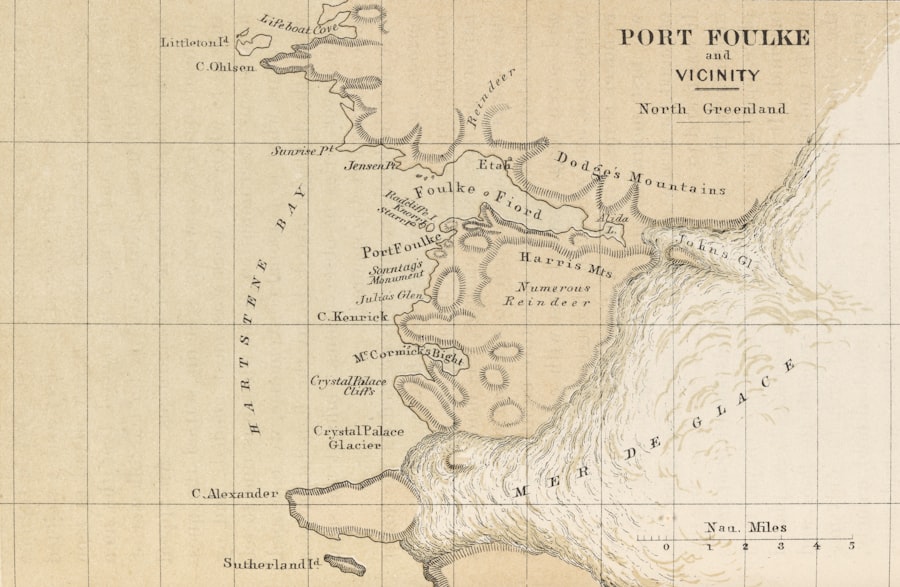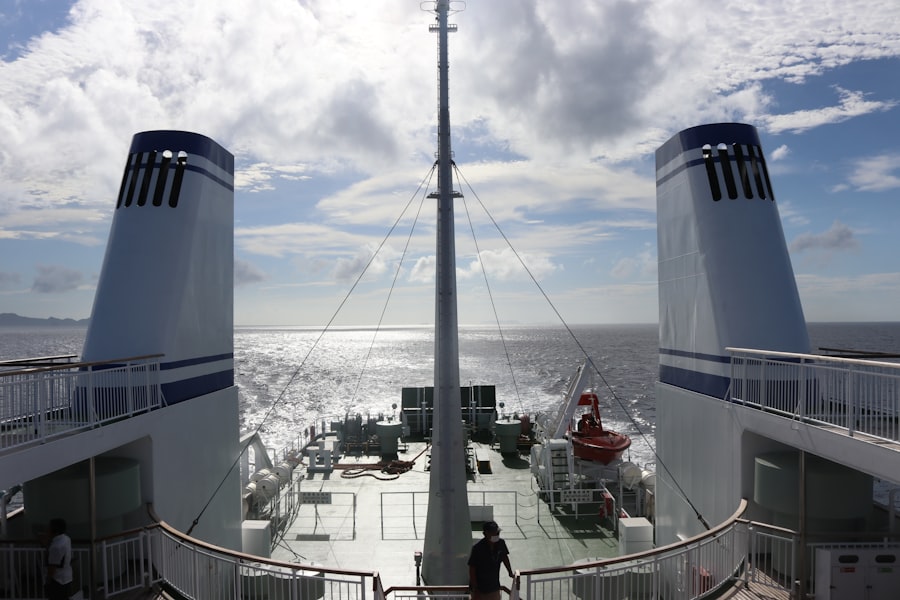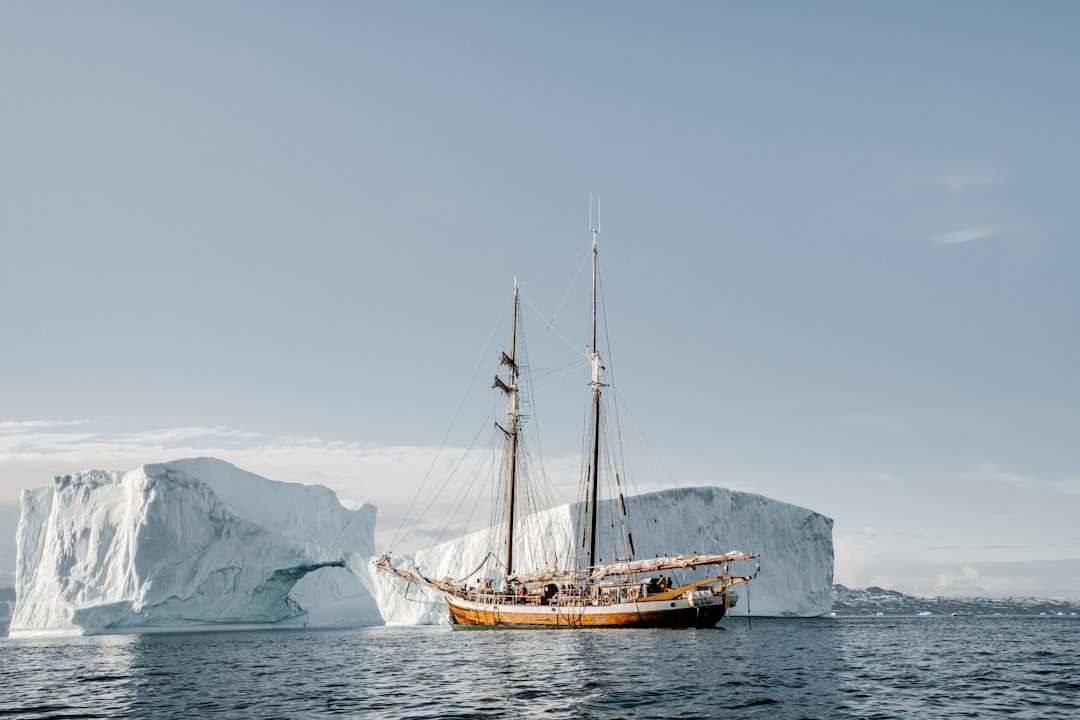The Drake Passage, a body of water that separates South America from Antarctica, is renowned for its tumultuous seas and breathtaking vistas. Stretching approximately 600 miles, this passage is often considered one of the most challenging maritime routes in the world. Named after the English explorer Sir Francis Drake, who navigated these waters in the late 16th century, the Drake Passage has become a rite of passage for adventurers and nature enthusiasts alike.
Its unpredictable weather patterns and strong currents create an environment that is both awe-inspiring and formidable, making it a focal point for those seeking to explore the wonders of the Antarctic region. Traveling through the Drake Passage offers a unique opportunity to witness the raw power of nature. The waters are known for their dramatic swells and winds that can reach up to 50 knots, creating a thrilling experience for those aboard.
However, it is not just the challenges that draw travelers; the passage is also a gateway to some of the most pristine landscapes on Earth. As one sails through these waters, they are treated to stunning views of icebergs, glacial formations, and an array of marine life. The journey through the Drake Passage is not merely a transit; it is an adventure that sets the stage for an unforgettable exploration of Antarctica.
Key Takeaways
- The Drake Passage is a body of water between South America’s Cape Horn and the South Shetland Islands of Antarctica, known for its rough seas and challenging sailing conditions.
- Hapag-Lloyd Expeditions offer a unique opportunity to explore the Drake Passage and Antarctica, with expert guides and a range of activities and excursions.
- Before embarking on the journey, it’s important to prepare for the unpredictable weather and rough seas of the Drake Passage, including packing appropriate clothing and gear.
- Safety measures on board Hapag-Lloyd Expeditions include experienced crew, state-of-the-art navigation equipment, and regular safety drills to ensure a smooth and secure journey.
- Wildlife spotting opportunities in the Drake Passage and Antarctica include sightings of penguins, seals, whales, and a variety of seabirds, providing unforgettable experiences for nature enthusiasts.
What to Expect on a Hapag-Lloyd Expedition
Embarking on a Hapag-Lloyd expedition through the Drake Passage promises an experience that combines luxury with adventure. Hapag-Lloyd is known for its commitment to providing high-quality service and unique itineraries that cater to discerning travelers. Passengers can expect a well-organized journey that emphasizes both comfort and exploration.
The expedition vessels are equipped with state-of-the-art amenities, ensuring that guests can relax and enjoy their surroundings while preparing for the adventures that lie ahead. Onboard, travelers will find a team of dedicated professionals who are passionate about sharing their knowledge of the region. From naturalists to historians, the crew is well-versed in the intricacies of Antarctic ecosystems and the rich history of exploration in these remote waters.
This expertise enhances the overall experience, as guests are encouraged to engage with their surroundings through lectures, discussions, and guided excursions. The combination of luxury accommodations and educational opportunities makes a Hapag-Lloyd expedition a truly enriching experience.
Preparing for the Journey

Preparation is key when embarking on an expedition through the Drake Passage. Travelers should begin by researching what to expect during their journey, including potential weather conditions and necessary gear. Packing appropriately is crucial, as the climate can be unpredictable.
Layering clothing is recommended, allowing for flexibility in adapting to changing temperatures. Waterproof outer layers, thermal undergarments, and sturdy footwear are essential items that will enhance comfort during excursions. In addition to physical preparation, mental readiness is equally important.
The Drake Passage can be notorious for its rough seas, and some travelers may experience seasickness. It is advisable to consult with a healthcare professional about preventative measures or medications that can help mitigate discomfort during the crossing. Understanding the potential challenges ahead can help travelers approach their journey with confidence and excitement rather than apprehension.
Safety Measures on Board
| Category | Metric |
|---|---|
| Life Jackets | Number of life jackets available |
| Fire Extinguishers | Number of fire extinguishers on board |
| Emergency Exits | Number of emergency exits |
| First Aid Kits | Number of first aid kits available |
Safety is a top priority on any Hapag-Lloyd expedition, particularly when navigating the unpredictable waters of the Drake Passage. The vessels are equipped with advanced safety features and technology designed to ensure passenger security throughout the journey. Crew members undergo rigorous training in emergency procedures and are well-prepared to handle any situation that may arise.
Regular safety drills are conducted to familiarize passengers with protocols, ensuring everyone knows what to do in case of an emergency. Moreover, Hapag-Lloyd places a strong emphasis on environmental safety as well. The company adheres to strict guidelines aimed at minimizing its ecological footprint while exploring sensitive ecosystems.
Passengers are educated about responsible travel practices, including waste management and wildlife interaction protocols. This commitment to safety extends beyond personal well-being; it encompasses a broader responsibility toward preserving the pristine environments that travelers come to admire.
Wildlife Spotting Opportunities
One of the most exhilarating aspects of traveling through the Drake Passage is the opportunity for wildlife spotting. The waters are teeming with life, offering glimpses of various marine species that thrive in this unique ecosystem. Passengers may encounter playful dolphins, majestic whales, and an array of seabirds soaring overhead.
The chance to witness these creatures in their natural habitat adds an element of excitement to the journey. As travelers approach Antarctica, they may also spot iconic species such as seals and penguins on ice floes or along coastal shores. The sight of a colony of Emperor penguins waddling across the ice is a highlight for many adventurers.
Hapag-Lloyd expeditions often include guided wildlife watching excursions led by knowledgeable naturalists who can provide insights into animal behavior and ecology. These experiences foster a deeper appreciation for the delicate balance of life in this remote region.
Activities and Excursions

The activities available during a Hapag-Lloyd expedition through the Drake Passage are designed to immerse travelers in the beauty and wonder of Antarctica. Excursions often include guided landings on remote islands, where passengers can explore stunning landscapes and observe wildlife up close. Zodiacs are commonly used for these excursions, allowing for easy access to shorelines that would otherwise be difficult to reach.
In addition to land-based activities, passengers may have opportunities for kayaking or even polar plunges for those seeking an adrenaline rush. These activities provide unique perspectives on the icy waters and allow travelers to engage with their surroundings in a more intimate way. Whether it’s hiking along rugged coastlines or paddling through serene bays, each excursion offers a chance to connect with nature and create lasting memories.
Onboard Amenities and Accommodations
Hapag-Lloyd expeditions are characterized by their luxurious accommodations and onboard amenities that cater to every traveler’s needs. Cabins are designed with comfort in mind, featuring modern furnishings and stunning views of the surrounding seascape. Many cabins come equipped with private balconies, allowing guests to enjoy breathtaking sunrises and sunsets from the comfort of their rooms.
Beyond accommodations, passengers can indulge in various amenities designed to enhance their experience. Onboard wellness facilities often include spas, fitness centers, and relaxation areas where travelers can unwind after a day of exploration. Social spaces such as lounges and bars provide opportunities for guests to mingle and share stories about their adventures while enjoying fine wines or cocktails crafted by skilled mixologists.
Dining Options and Cuisine
Culinary experiences aboard Hapag-Lloyd expeditions are nothing short of exceptional. The dining options reflect a commitment to quality and variety, with menus featuring fresh ingredients sourced from local suppliers whenever possible. Passengers can expect gourmet meals prepared by talented chefs who take pride in creating dishes that celebrate both international flavors and regional specialties.
Dining aboard these vessels is designed to be a social experience as well. Guests can enjoy meals in elegant dining rooms or opt for more casual settings depending on their mood. The emphasis on communal dining fosters connections among travelers as they share stories over delicious food.
Additionally, special dietary needs are accommodated with advance notice, ensuring that every guest can enjoy their culinary journey without concern.
Weather and Climate Considerations
Understanding the weather and climate conditions in the Drake Passage is essential for any traveler preparing for this expedition. The region experiences rapidly changing weather patterns influenced by its proximity to Antarctica. Travelers should be prepared for everything from sunny skies to sudden storms, making it crucial to pack versatile clothing suitable for various conditions.
The best time to traverse the Drake Passage typically falls between late October and early March when temperatures are milder, and wildlife activity is at its peak. However, even during this period, conditions can be unpredictable. Travelers should remain flexible in their plans and embrace the spontaneity that comes with exploring such a dynamic environment.
Expert Guides and Lectures
A hallmark of Hapag-Lloyd expeditions is the presence of expert guides who enrich the travel experience through their knowledge and passion for the region. These professionals come from diverse backgrounds, including marine biology, geology, history, and environmental science. Their expertise allows them to provide valuable insights into the unique ecosystems encountered during the journey.
Lectures held onboard cover a wide range of topics related to Antarctica’s natural history, wildlife behavior, and conservation efforts. These educational sessions not only enhance passengers’ understanding but also foster a sense of responsibility toward preserving this fragile environment. Engaging with experts allows travelers to deepen their appreciation for the wonders they encounter during their expedition.
Tips for a Smooth Passage
To ensure a smooth passage through the Drake Passage, travelers should consider several practical tips before embarking on their journey. First and foremost, staying informed about weather conditions can help set realistic expectations for each day’s activities. Keeping an open mind about potential changes in plans will enhance overall enjoyment.
Additionally, maintaining good communication with crew members can provide valuable insights into daily itineraries and safety protocols. Passengers should not hesitate to ask questions or seek assistance when needed; crew members are there to ensure everyone has a memorable experience. Finally, embracing spontaneity and being adaptable will allow travelers to fully immerse themselves in the adventure that awaits them in this remarkable part of the world.
With careful preparation and an adventurous spirit, travelers can embark on a journey filled with breathtaking landscapes, fascinating wildlife encounters, and unforgettable experiences that will last a lifetime.
In recent developments concerning maritime routes, the Drake Passage has garnered attention due to its strategic importance for shipping companies like Hapag-Lloyd. An insightful article on this topic can be found on MyGeoQuest, which delves into the challenges and opportunities presented by this treacherous yet vital passage.
